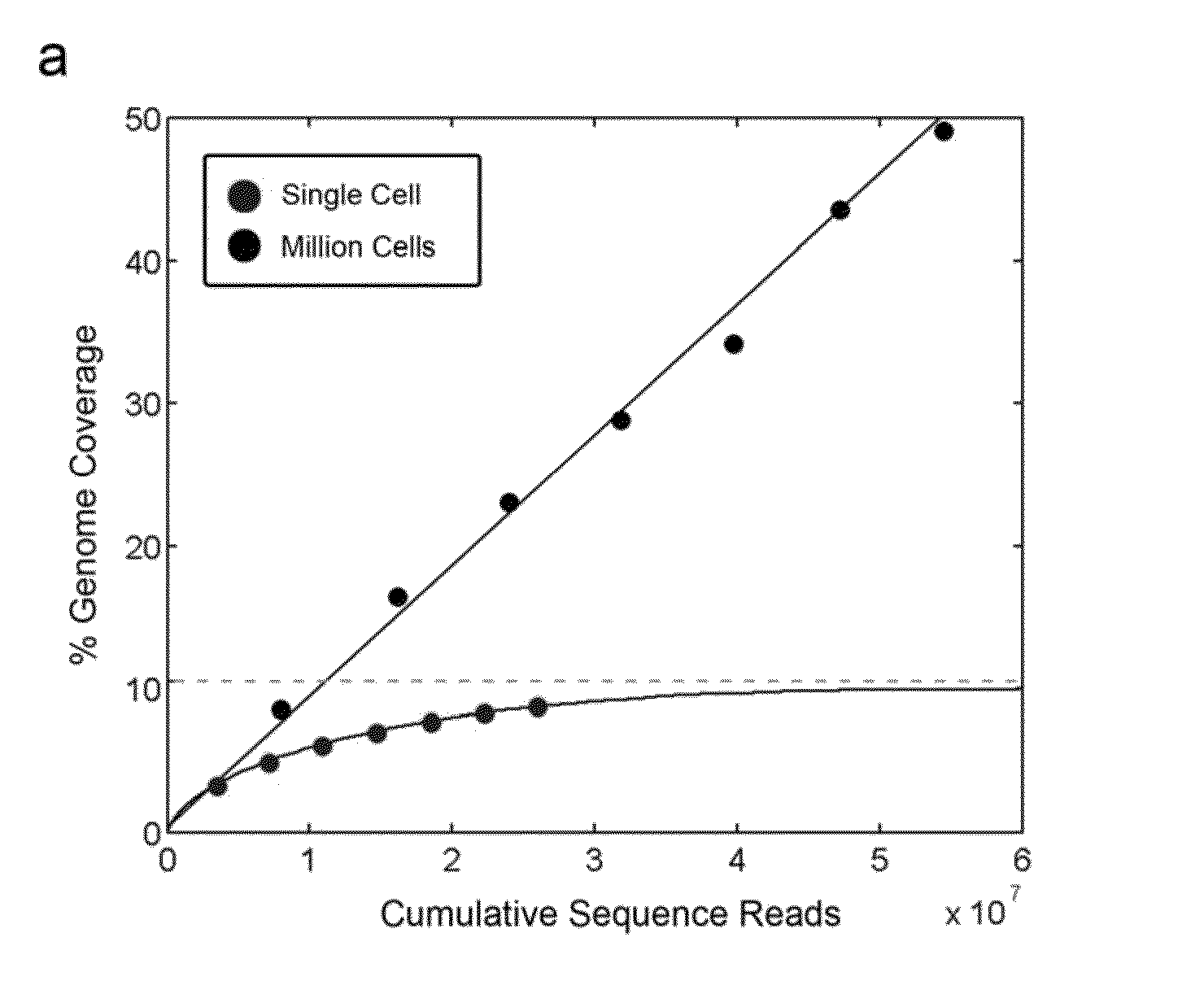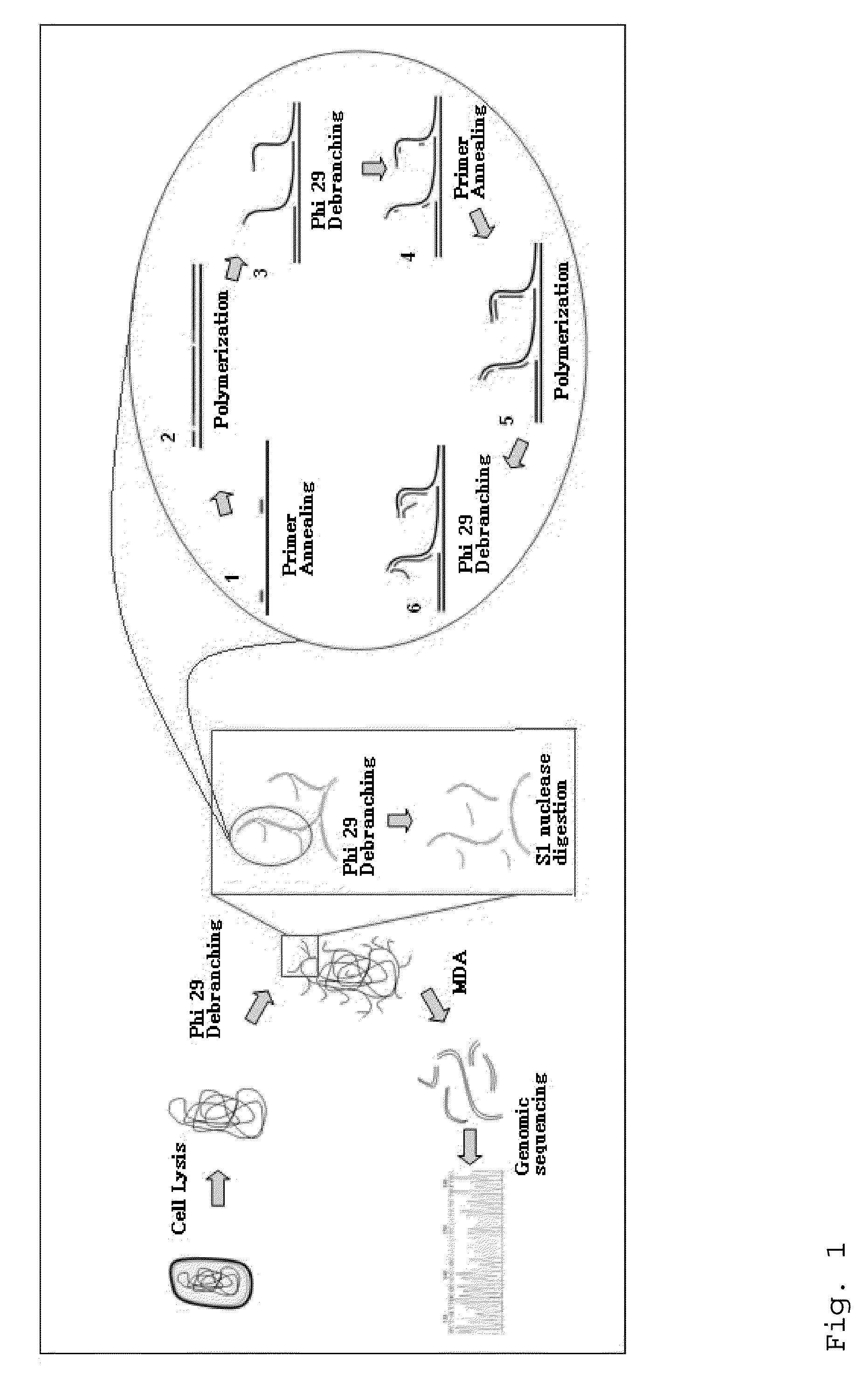Varietal counting of nucleic acids for obtaining genomic copy number information
a technology of copy number information and nucleic acid, which is applied in the field of variable counting of nucleic acids for obtaining genomic copy number information, can solve the problems of affecting the optimization process, unable to obtain single cell measurements, and non-uniform amplification of the genome,
- Summary
- Abstract
- Description
- Claims
- Application Information
AI Technical Summary
Benefits of technology
Problems solved by technology
Method used
Image
Examples
examples
Methylation Sequencing
[0322]Currently, high throughput sequencing requires physical purification of sub-genomic regions of interest in order to obtain high coverage of those regions. The method of sequence capture has been applied to examine methylation in large sets of CpG islands at the sequence level. Methylation sequencing is based on the conversion of C residues to T using bisulfite reagents, with methylated C's detected as those protected from C to T conversion. This means either that sequence capture must take place before bisulfite treatment, which requires more starting DNA than is available for patient specimens, or that sequence capture must be designed to accommodate the C to T conversion. The bisulfite based sequencing method used herein adopts the latter and so is suitable for high throughput single molecule sequencing by either the Illumina or Roche 454 methods, using as little as 100 ng of input DNA. The sequencing method depends on hybrid capture of bisulfite treate...
PUM
| Property | Measurement | Unit |
|---|---|---|
| nucleic acid sequence | aaaaa | aaaaa |
| size | aaaaa | aaaaa |
| volume | aaaaa | aaaaa |
Abstract
Description
Claims
Application Information
 Login to View More
Login to View More - R&D
- Intellectual Property
- Life Sciences
- Materials
- Tech Scout
- Unparalleled Data Quality
- Higher Quality Content
- 60% Fewer Hallucinations
Browse by: Latest US Patents, China's latest patents, Technical Efficacy Thesaurus, Application Domain, Technology Topic, Popular Technical Reports.
© 2025 PatSnap. All rights reserved.Legal|Privacy policy|Modern Slavery Act Transparency Statement|Sitemap|About US| Contact US: help@patsnap.com



